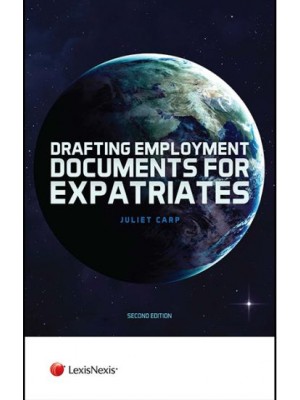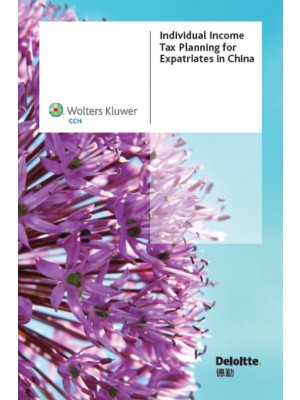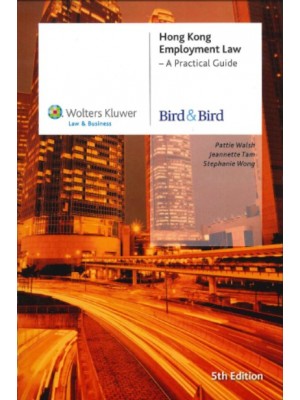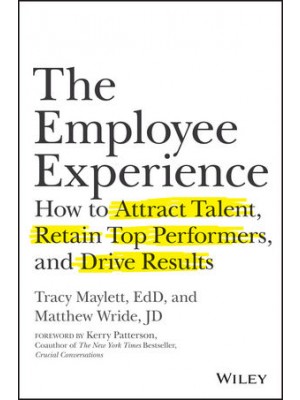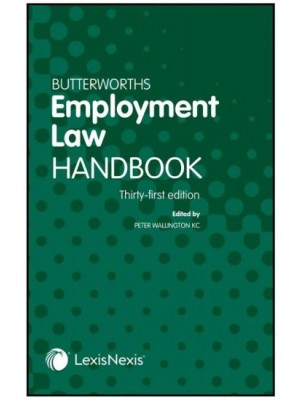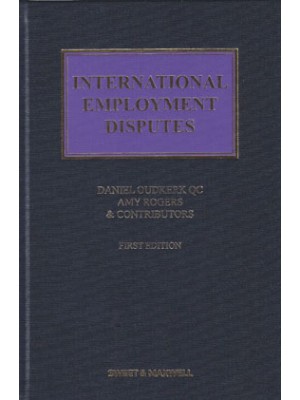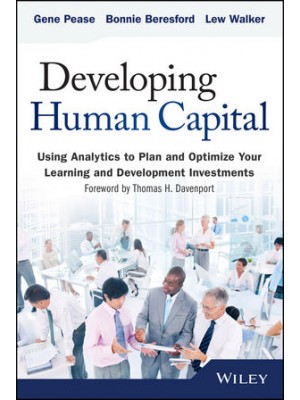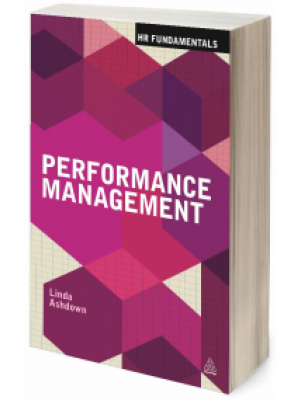Ignition xv
Abbreviations and Notation xxiii
PART I COUNTERPARTY CREDIT RISK, COLLATERAL AND FUNDING
1 Introduction 3
1.1 A Dialogue on CVA 3
1.2 Risk Measurement: Credit VaR 3
1.3 Exposure, CE, PFE, EPE, EE, EAD 5
1.4 Exposure and Credit VaR 7
1.5 Interlude: P and Q 7
1.6 Basel 8
1.7 CVA and Model Dependence 9
1.8 Input and Data Issues on CVA 10
1.9 Emerging Asset Classes: Longevity Risk 11
1.10 CVA and Wrong Way Risk 12
1.11 Basel III: VaR of CVA and Wrong Way Risk 13
1.12 Discrepancies in CVA Valuation: Model Risk and Payoff Risk 14
1.13 Bilateral Counterparty Risk: CVA and DVA 15
1.14 First-to-Default in CVA and DVA 17
1.15 DVA Mark-to-Market and DVA Hedging 18
1.16 Impact of Close-Out in CVA and DVA 19
1.17 Close-Out Contagion 20
1.18 Collateral Modelling in CVA and DVA 21
1.19 Re-Hypothecation 22
1.20 Netting 22
1.21 Funding 23
1.22 Hedging Counterparty Risk: CCDS 25
1.23 Restructuring Counterparty Risk: CVA-CDOs and Margin Lending 26
2 Context 31
2.1 Definition of Default: Six Basic Cases 31
2.2 Definition of Exposures 32
2.3 Definition of Credit Valuation Adjustment (CVA) 35
2.4 Counterparty Risk Mitigants: Netting 37
2.5 Counterparty Risk Mitigants: Collateral 38
2.5.1 The Credit Support Annex (CSA) 39
2.5.2 The ISDA Proposal for a New Standard CSA 40
2.5.3 Collateral Effectiveness as a Mitigant 40
2.6 Funding 41
2.6.1 A First Attack on Funding Cost Modelling 42
2.6.2 The General Funding Theory and its Recursive Nature 42
2.7 Value at Risk (VaR) and Expected Shortfall (ES) of CVA 43
2.8 The Dilemma of Regulators and Basel III 44
3 Modelling the Counterparty Default 47
3.1 Firm Value (or Structural) Models 47
3.1.1 The Geometric Brownian Assumption 47
3.1.2 Merton’s Model 48
3.1.3 Black and Cox’s (1976) Model 50
3.1.4 Credit Default Swaps and Default Probabilities 54
3.1.5 Black and Cox (B&C) Model Calibration to CDS: Problems 55
3.1.6 The AT1P Model 57
3.1.7 A Case Study with AT1P: Lehman Brothers Default History 58
3.1.8 Comments 60
3.1.9 SBTV Model 61
3.1.10 A Case Study with SBTV: Lehman Brothers Default History 62
3.1.11 Comments 64
3.2 Firm Value Models: Hints at the Multiname Picture 64
3.3 Reduced Form (Intensity) Models 65
3.3.1 CDS Calibration and Intensity Models 66
3.3.2 A Simpler Formula for Calibrating Intensity to a Single CDS 70
3.3.3 Stochastic Intensity: The CIR Family 72
3.3.4 The Cox-Ingersoll-Ross Model (CIR) Short-Rate Model for r 72
3.3.5 Time-Inhomogeneous Case: CIR++ Model 74
3.3.6 Stochastic Diffusion Intensity is Not Enough: Adding Jumps. The JCIR(++) Model 75
3.3.7 The Jump-Diffusion CIR Model (JCIR) 76
3.3.8 Market Incompleteness and Default Unpredictability 78
3.3.9 Further Models 78
3.4 Intensity Models: The Multiname Picture 78
3.4.1 Choice of Variables for the Dependence Structure 78
3.4.2 Firm Value Models? 80
3.4.3 Copula Functions 80
3.4.4 Copula Calibration, CDOs and Criticism of Copula Functions 86
PART II PRICING COUNTERPARTY RISK: UNILATERAL CVA
4 Unilateral CVA and Netting for Interest Rate Products 89
4.1 First Steps towards a CVA Pricing Formula 89
4.1.1 Symmetry versus Asymmetry 90
4.1.2 Modelling the Counterparty Default Process 91
4.2 The Probabilistic Framework 92
4.3 The General Pricing Formula for Unilateral Counterparty Risk 94
4.4 Interest Rate Swap (IRS) Portfolios 97
4.4.1 Counterparty Risk in Single IRS 97
4.4.2 Counterparty Risk in an IRS Portfolio with Netting 100
4.4.3 The Drift Freezing Approximation 102
4.4.4 The Three-Moments Matching Technique 104
4.5 Numerical Tests 106
4.5.1 Case A: IRS with Co-Terminal Payment Dates 106
4.5.2 Case B: IRS with Co-Starting Resetting Date 108
4.5.3 Case C: IRS with First Positive, Then Negative Flow 108
4.5.4 Case D: IRS with First Negative, Then Positive Flows 109
4.5.5 Case E: IRS with First Alternate Flows 113
4.6 Conclusions 120
5 Wrong Way Risk (WWR) for Interest Rates 121
5.1 Modelling Assumptions 122
5.1.1 G2++ Interest Rate Model 122
5.1.2 CIR++ Stochastic Intensity Model 123
5.1.3 CIR++ Model: CDS Calibration 124
5.1.4 Interest Rate/Credit Spread Correlation 126
5.1.5 Adding Jumps to the Credit Spread 126
5.2 Numerical Methods 127
5.2.1 Discretization Scheme 128
5.2.2 Simulating Intensity Jumps 128
5.2.3 “American Monte Carlo” (Pallavicini 2006) 128
5.2.4 Callable Payoffs 128
5.3 Results and Discussion 129
5.3.1 WWR in Single IRS 129
5.3.2 WWR in an IRS Portfolio with Netting 129
5.3.3 WWR in European Swaptions 130
5.3.4 WWR in Bermudan Swaptions 130
5.3.5 WWR in CMS Spread Options 132
5.4 Contingent CDS (CCDS) 132
5.5 Results Interpretation and Conclusions 133
6 Unilateral CVA for Commodities with WWR 135
6.1 Oil Swaps and Counterparty Risk 135
6.2 Modelling Assumptions 137
6.2.1 Commodity Model 137
6.2.2 CIR++ Stochastic-Intensity Model 139
6.3 Forward versus Futures Prices 140
6.3.1 CVA for Commodity Forwards without WWR 141
6.3.2 CVA for Commodity Forwards with WWR 142
6.4 Swaps and Counterparty Risk 142
6.5 UCVA for Commodity Swaps 144
6.5.1 Counterparty Risk from the Payer’s Perspective: The Airline Computes Counterparty Risk 145
6.5.2 Counterparty Risk from the Receiver’s Perspective: The Bank Computes Counterparty Risk 148
6.6 Inadequacy of Basel’s WWR Multipliers 148
6.7 Conclusions 151
7 Unilateral CVA for Credit with WWR 153
7.1 Introduction to CDSs with Counterparty Risk 153
7.1.1 The Structure of the Chapter 155
7.2 Modelling Assumptions 155
7.2.1 CIR++ Stochastic-Intensity Model 156
7.2.2 CIR++ Model: CDS Calibration 157
7.3 CDS Options Embedded in CVA Pricing 158
7.4 UCVA for Credit Default Swaps: A Case Study 160
7.4.1 Changing the Copula Parameters 160
7.4.2 Changing the Market Parameters 164
7.5 Conclusions 164
8 Unilateral CVA for Equity with WWR 167
8.1 Counterparty Risk for Equity Without a Full Hybrid Model 167
8.1.1 Calibrating AT1P to the Counterparty’s CDS Data 168
8.1.2 Counterparty Risk in Equity Return Swaps (ERS) 169
8.2 Counterparty Risk with a Hybrid Credit-Equity Structural Model 172
8.2.1 The Credit Model 172
8.2.2 The Equity Model 174
8.2.3 From Barrier Options to Equity Pricing 176
8.2.4 Equity and Equity Options 179
8.3 Model Calibration and Empirical Results 180
8.3.1 BP and FIAT in 2009 181
8.3.2 Uncertainty in Market Expectations 186
8.3.3 Further Results: FIAT in 2008 and BP in 2010 188
8.4 Counterparty Risk and Wrong Way Risk 191
8.4.1 Deterministic Default Barrier 193
8.4.2 Uncertainty on the Default Barrier 198
9 Unilateral CVA for FX 205
9.1 Pricing with Two Currencies: Foundations 206
9.2 Unilateral CVA for a Fixed-Fixed CCS 210
9.2.1 Approximating the Volatility of Cross Currency Swap Rates 216
9.2.2 Parameterization of the FX Correlation 218
9.3 Unilateral CVA for Cross Currency Swaps with Floating Legs 224
9.4 Why a Cross Currency Basis? 226
9.4.1 The Approach of Fujii, Shimada and Takahashi (2010) 227
9.4.2 Collateral Rates versus Risk-Free Rates 228
9.4.3 Consequences of Perfect Collateralization 229
9.5 CVA for CCS in Practice 230
9.5.1 Changing the CCS Moneyness 234
9.5.2 Changing the Volatility 235
9.5.3 Changing the FX Correlations 235
9.6 Novations and the Cost of Liquidity 237
9.6.1 A Synthetic Contingent CDS: The Novation 238
9.6.2 Extending the Approach to the Valuation of Liquidity 241
9.7 Conclusions 243
PART III ADVANCED CREDIT AND FUNDING RISK PRICING
10 New Generation Counterparty and Funding Risk Pricing 247
10.1 Introducing the Advanced Part of the Book 247
10.2 What We Have Seen Before: Unilateral CVA 249
10.2.1 Approximation: Default Bucketing and Independence 250
10.3 Unilateral Debit Valuation Adjustment (UDVA) 250
10.4 Bilateral Risk and DVA 251
10.5 Undesirable Features of DVA 253
10.5.1 Profiting From Own Deteriorating Credit Quality 253
10.5.2 DVA Hedging? 253
10.5.3 DVA: Accounting versus Capital Requirements 254
10.5.4 DVA: Summary and Debate on Realism 255
10.6 Close-Out: Risk-Free or Replacement? 256
10.7 Can We Neglect the First-to-Default Time? 257
10.7.1 A Simplified Formula without First-to-Default: The Case of an Equity Forward 258
10.8 Payoff Risk 258
10.9 Collateralization, Gap Risk and Re-Hypothecation 259
10.10 Funding Costs 262
10.11 Restructuring Counterparty Risk 263
10.11.1 CVA Volatility: The Wrong Way 263
10.11.2 Floating Margin Lending 264
10.11.3 Global Valuation 265
10.12 Conclusions 266
11 A First Attack on Funding Cost Modelling 269
11.1 The Problem 269
11.2 A Closer Look at Funding and Discounting 271
11.3 The Approach Proposed by Morini and Prampolini (2010) 272
11.3.1 The Borrower’s Case 273
11.3.2 The Lender’s Case 274
11.3.3 The Controversial Role of DVA: The Borrower 275
11.3.4 The Controversial Role of DVA: The Lender 276
11.3.5 Discussion 277
11.4 What Next on Funding? 278
12 Bilateral CVA–DVA and Interest Rate Products 279
12.1 Arbitrage-Free Valuation of Bilateral Counterparty Risk 281
12.1.1 Symmetry versus Asymmetry 285
12.1.2 Worsening of Credit Quality and Positive Mark-to-Market 285
12.2 Modelling Assumptions 286
12.2.1 G2++ Interest Rate Model 286
12.2.2 CIR++ Stochastic Intensity Model 288
12.2.3 Realistic Market Data Set for CDS Options 289
12.3 Numerical Methods 290
12.4 Results and Discussion 291
12.4.1 Bilateral VA in Single IRS 292
12.4.2 Bilateral VA in an IRS Portfolio with Netting 296
12.4.3 Bilateral VA in Exotic Interest Rate Products 301
12.5 Conclusions 302
13 Collateral, Netting, Close-Out and Re-Hypothecation 305
13.1 Trading Under the ISDA Master Agreement 306
13.1.1 Mathematical Setup and CBVA Definition 306
13.1.2 Collateral Delay and Dispute Resolutions 308
13.1.3 Close-Out Netting Rules 308
13.1.4 Collateral Re-Hypothecation 309
13.2 Bilateral CVA Formula under Collateralization 310
13.2.1 Collecting CVA Contributions 310
13.2.2 CBVA General Formula 312
13.2.3 CCVA and CDVA Definitions 312
13.3 Close-Out Amount Evaluation 313
13.4 Special Cases of Collateral-Inclusive Bilateral Credit Valuation Adjustment 314
13.5 Example of Collateralization Schemes 315
13.5.1 Perfect Collateralization 315
13.5.2 Collateralization Through Margining 316
13.6 Conclusions 316
14 Close-Out and Contagion with Examples of a Simple Payoff 319
14.1 Introduction to Close-Out Modelling and Earlier Work 319
14.1.1 Close-Out Modelling: Context 319
14.1.2 Legal Documentation on Close-Out 320
14.1.3 Literature 320
14.1.4 Risk-Free versus Replacement Close-Out: Practical Consequences 321
14.2 Classical Unilateral and Bilateral Valuation Adjustments 322
14.3 Bilateral Adjustment and Close-Out: Risk-Free or Replacement? 323
14.4 A Quantitative Analysis and a Numerical Example 323
14.4.1 Contagion Issues 326
14.5 Conclusions 329
15 Bilateral Collateralized CVA and DVA for Rates and Credit 331
15.1 CBVA for Interest Rate Swaps 332
15.1.1 Changing the Margining Frequency 332
15.1.2 Inspecting the Exposure Profiles 334
15.1.3 A Case Where Re-Hypothecation is Worse than No Collateral at All 335
15.1.4 Changing the Correlation Parameters 336
15.1.5 Changing the Credit Spread Volatility 337
15.2 Modelling Credit Contagion 340
15.2.1 The CDS Price Process 340
15.2.2 Calculation of Survival Probability 341
15.2.3 Modelling Default-Time Dependence 344
15.3 CBVA for Credit Default Swaps 345
15.3.1 Changing the Copula Parameters 345
15.3.2 Inspecting the Contagion Risk 347
15.3.3 Changing the CDS Moneyness 347
15.4 Conclusions 349
16 Including Margining Costs in Collateralized Contracts 351
16.1 Trading Under the ISDA Master Agreement 352
16.1.1 Collateral Accrual Rates 352
16.1.2 Collateral Management and Margining Costs 353
16.2 CBVA General Formula with Margining Costs 355
16.2.1 Perfect Collateralization 356
16.2.2 Futures Contracts 357
16.3 Changing the Collateralization Currency 357
16.3.1 Margining Cost in Foreign Currency 357
16.3.2 Settlement Liquidity Risk 358
16.3.3 Gap Risk in Single-Currency Contracts with
Foreign-Currency Collaterals 359
16.4 Conclusions 359
17 Funding Valuation Adjustment (FVA)? 361
17.1 Dealing with Costs of Funding 361
17.1.1 Central Clearing, CCPs and this Book 362
17.1.2 High Level Features 362
17.1.3 Single-Deal (Micro) vs. Homogeneous (Macro) Funding Models 363
17.1.4 Previous Literature on Funding and Collateral 364
17.1.5 Including FVA along with Credit and Debit Valuation Adjustment 365
17.1.6 FVA is not DVA 365
17.2 Collateral- and Funding-Inclusive Bilateral Valuation Adjusted Price 366
17.3 Funding Risk and Liquidity Policies 367
17.3.1 Funding, Hedging and Collateralization 367
17.3.2 Liquidity Policies 368
17.4 CBVA Pricing Equation with Funding Costs (CFBVA) 372
17.4.1 Iterative Solution of the CFBVA Pricing Equation 373
17.4.2 Funding Derivative Contracts in a Diffusion Setting 374
17.4.3 Implementing Hedging Strategies via Derivative Markets 377
17.5 Detailed Examples 378
17.5.1 Funding with Collateral 378
17.5.2 Collateralized Contracts Priced by a CCP 379
17.5.3 Dealing with Own Credit Risk: FVA and DVA 380
17.5.4 Deriving Earlier Results on FVA and DVA 381
17.6 Conclusions: FVA and Beyond 382
18 Non-Standard Asset Classes: Longevity Risk 385
18.1 Introduction to Longevity Markets 385
18.1.1 The Longevity Swap Market 385
18.1.2 Longevity Swaps: Collateral and Credit Risk 386
18.1.3 Indexed Longevity Swaps 390
18.1.4 Endogenous Credit Collateral and Funding-Inclusive Swap Rates 390
18.2 Longevity Swaps: The Payoff � 391
18.3 Mark-to-Market for Longevity Swaps 394
18.4 Counterparty and Own Default Risk, Collateral and Funding 397
18.5 An Example of Modelling Specification from Biffis et al. (2011) 401
18.6 Discussion of the Results in Biffis et al. (2011) 404
19 Conclusions and Further Work 409
19.1 A Final Dialogue: Models, Regulations, CVA/DVA, Funding and More 409
Bibliography 415
Index 423








